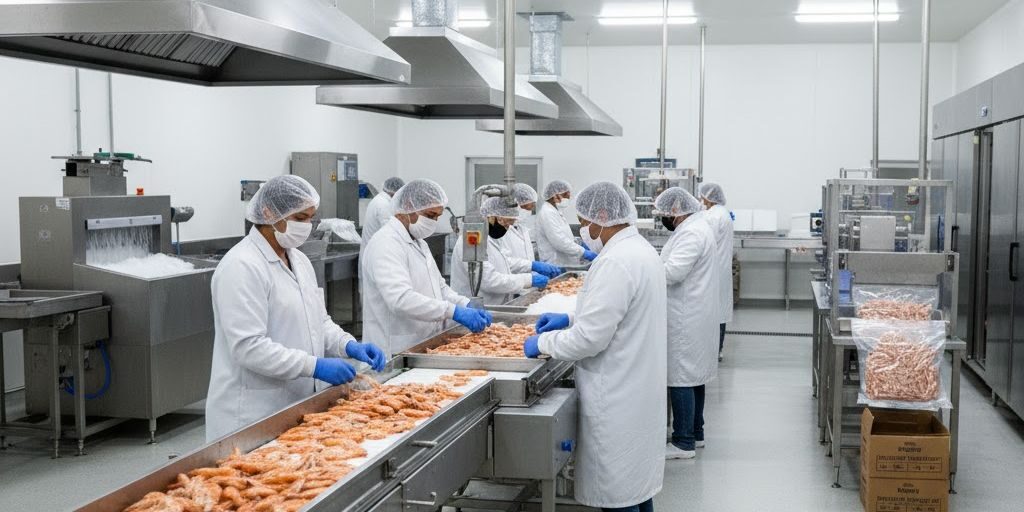- Software Gestor para Aquicultura
- (85) 2139-6730
- contato@despesca.com.br
Export and health requirements.

Distribution channels for shrimp and fish farming
12/08/2025
Calculation of production costs and pricing
14/08/2025From Pond to the Global Market: Navigating Sanitary Requirements for Export
For us producers here in Ceará and throughout the Northeast, the Brazilian shrimp export market has always been seen as a horizon of great value. The opportunity to take our product, the result of so much hard work, to the world is a goal many of us aspire to. But, as we know, to enter this global game, it’s not enough to have an excellent product; we need to comply with a set of rigorous rules, known as sanitary requirements in aquaculture.
We know that the quality of our shrimp or fish is indisputable, but the international market demands proof of that quality. This means that our farm needs to be prepared to show that the entire production, from beginning to end, follows a standard of food safety and sanitation that is non-negotiable.
The Starting Point: The National Baseline
The process begins at home, with our own legislation. To even think about exporting, our farm needs to be properly registered and up-to-date with the regulations of MAPA (Ministry of Agriculture, Livestock, and Food Supply). MAPA inspections ensure that good production and sanitary practices are being followed, and this is our first credential for the foreign market.
The Entry Visa: International Standards and HACCP
Each country or economic bloc, such as the European Union and the United States, has its own rules. But, at the core, most of them rely on a fundamental system: HACCP (Hazard Analysis and Critical Control Points).
For us producers, HACCP is a proactive system. It teaches us to identify and control biological, chemical, and physical hazards that could compromise the safety of our product. Instead of simply testing the final product, HACCP ensures that safety is maintained at every stage of production, from feed management to packaging.
Traceability: The Complete Story of Your Shrimp
If HACCP is our “game plan” for food safety, shrimp farming traceability is the story our product tells. International buyers want to know the exact origin of the shrimp, from the date and supplier of the post-larvae, the feeding history, water parameters, to the harvest date and the name of the farm.
It’s like having a “passport” for each batch. And to maintain such detailed and precise records, a data management tool is essential. It helps us collect and organize this information reliably and quickly, something that would be nearly impossible to do on paper.
Good Practices and Certifications: The Proof of Your Commitment
Third-party seafood export certifications, such as BAP (Best Aquaculture Practices) or ASC (Aquaculture Stewardship Council), are the most solid way to prove to the world that our farm follows the best good aquaculture practices for export. These quality and sustainability seals give us a huge competitive advantage, opening the doors to premium markets that only accept certified products.
From Paper to Truck: Documentation and Logistics
The documentation for exporting shrimp is extensive and precise. It includes sanitary certificates, certificates of origin, production records, and more. And our work doesn’t stop at the cold storage door. Logistics, from freezing to transport, must be impeccable to maintain the quality and safety of the product.
The Culture of Quality: Involving the Team
Finally, preparing for export isn’t just about paperwork or technology. It’s about creating a culture of quality throughout the entire team. Everyone, from the pond technician to the packaging staff, needs to understand the importance of each step and the need to follow sanitary protocols to the letter.
In summary, Brazilian shrimp export is an ambitious but totally achievable goal. The secret lies in viewing sanitary requirements not as barriers, but as a roadmap to elevate the level of our production. With good planning, the right tools for export data management, and a commitment to excellence, we can transform our farm into a global market player.


